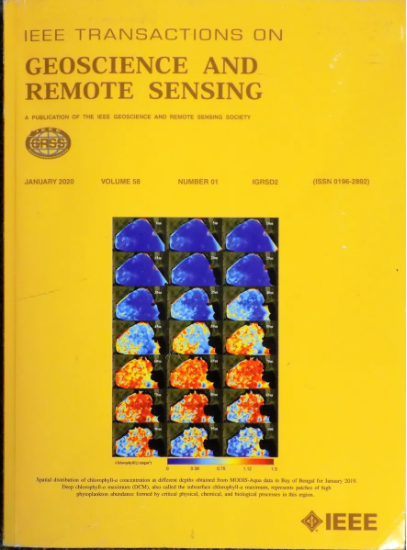三维井眼轨迹超深方位电阻率测井的鲁棒正演模拟
IF 8.6
1区 地球科学
Q1 ENGINEERING, ELECTRICAL & ELECTRONIC
IEEE Transactions on Geoscience and Remote Sensing
Pub Date : 2025-01-13
DOI:10.1109/TGRS.2025.3529202
引用次数: 0
摘要
平面分层横向各向同性地层电磁解析正演模拟是电测井的基础。然而,尽管它是电测井的经典项目,但很少有文献介绍完整的解决过程。本文提出了一个完整的三轴磁偶极子电磁场求解框架,并将其应用于超深方位电阻率(UDAR)测井仪的响应模拟。完整的框架由三部分组成:求解均匀TI介质中的直接场,推导场在层状地层中的传播,计算场从谱域到空间域的数值积分。每个部分有机地连接在一起,并以创新的方式重新制定公式。采用系数传播矩阵法(CPMM)来描述场的传播,由于不存在迭代关系,该方法比一般的反射/透射法效率更高。采用了400多个滤波系数,提高了Sommerfeld积分的效率和鲁棒性。最后,提出了一种任意方位天线的电磁耦合算法,用于模拟三维井眼轨迹中的UDAR响应。本文章由计算机程序翻译,如有差异,请以英文原文为准。
A Robust Forward Modeling for Ultradeep Azimuthal Resistivity Logging in 3-D Well Trajectory
Electromagnetic (EM) forward modeling with analytical method in a planar-stratified transverse isotropic (TI) formation is the groundwork for electrical logging. However, there is little literature presenting the complete solution process despite it being a classic item for electrical logging. In this study, we present a complete framework of solving for EM field caused by triaxial magnetic dipole and apply it to simulate the response of ultradeep azimuthal resistivity (UDAR) logging tool. The complete framework consists of three parts such as solving for the direct fields in a homogeneous TI medium, deriving the field propagation in layered formation, and calculating the numerical integral of the field from the spectral domain to spatial domain. Each part is organically connected together, and the formulas are reformulated with an innovate approach. The field propagation is described using the coefficient propagator matrix method (CPMM), which is more efficient than the general reflection/transmission method because there is no iterative relationship. Over 400 filter coefficients are adopted to increase the efficiency and robustness of the Sommerfeld integral. Finally, an EM coupling algorithm for arbitrary azimuthal antennas is presented to simulate UDAR responses in 3-D well trajectory.
求助全文
通过发布文献求助,成功后即可免费获取论文全文。
去求助
来源期刊

IEEE Transactions on Geoscience and Remote Sensing
工程技术-地球化学与地球物理
CiteScore
11.50
自引率
28.00%
发文量
1912
审稿时长
4.0 months
期刊介绍:
IEEE Transactions on Geoscience and Remote Sensing (TGRS) is a monthly publication that focuses on the theory, concepts, and techniques of science and engineering as applied to sensing the land, oceans, atmosphere, and space; and the processing, interpretation, and dissemination of this information.
 求助内容:
求助内容: 应助结果提醒方式:
应助结果提醒方式:


